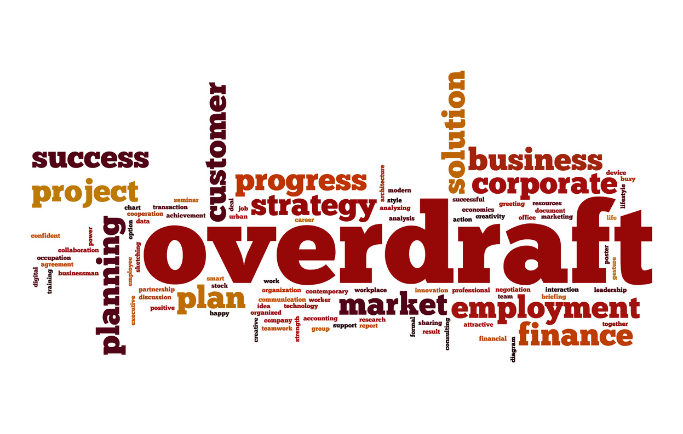How to Secure a Business Overdraft to Manage Your Daily Operations
10/6/20253 min read


Managing the day-to-day finances of a small or medium-sized enterprise (SME) can feel like a constant juggling act. One moment you're celebrating a big sale; the next, you're scrambling to cover payroll or a sudden supplier invoice. This is where a business overdraft can be a lifesaver. Unlike a traditional term loan, an overdraft provides a flexible line of credit attached to your business bank account, offering a financial safety net for those inevitable cash flow gaps.
For many South African businesses, a business overdraft is the ideal tool for managing working capital and ensuring smooth operations. It provides the flexibility to access funds as needed, up to a pre-approved limit, without the need for a new application each time.
What is a Business Overdraft and How Does It Work?
Think of a business overdraft as a cushion for your bank account. The bank sets a maximum limit, say R100,000, that you can withdraw even when your account balance is zero. You only pay interest on the amount you actually use and for the period you use it. This makes it a highly cost-effective solution for short-term needs.
This contrasts sharply with a traditional business loan, which provides a lump sum that starts accruing interest immediately. With an overdraft, if you don't use the facility, you don't pay for it. This flexibility is what makes it a cornerstone of smart financial management for SMEs.
Why Do South African Businesses Need an Overdraft?
In the dynamic South African market, cash flow can be unpredictable. An overdraft helps businesses:
Manage Seasonal Fluctuations: Retailers, for example, often face high expenses before the festive season, with revenue only coming in after the sales. An overdraft can cover these costs.
Cover Unexpected Expenses: A machine breaks down, or a vital delivery is delayed. An overdraft provides immediate access to funds to handle these emergencies without disrupting operations.
Bridge Payment Gaps: A large client might be late with a payment, but your suppliers or employees still need to be paid. An overdraft ensures you can meet these obligations on time, protecting your business's reputation.
Seize Growth Opportunities: A sudden opportunity to purchase discounted inventory or take on a large, lucrative contract might arise. An overdraft gives you the financial agility to act quickly.
The Application Checklist: Getting Your Business Overdraft-Ready
Securing a business overdraft, like any form of funding, requires demonstrating that your business is financially sound and well-managed. Lenders, including ourselves, look for key indicators of stability and repayment capacity. Here’s a checklist to help you prepare:
1. Financial Health and Documentation
Lenders need a clear picture of your business's financial performance.
Business Bank Statements: Provide at least the last 6 months of bank statements. This is the most crucial document as it provides a real-time, unfiltered view of your revenue, expenses, and cash flow.
Proof of Revenue: Lenders want to see a minimum consistent monthly revenue. On our platform, a minimum of R50,000 in monthly revenue for the past 6 months is required. This demonstrates that your business has a stable income stream to service the debt.
Financial Statements: Have your latest income statements and balance sheets ready. These documents provide a more structured overview of your profitability and overall financial position.
2. Business and Legal Standing
Your business needs to be a legitimate, registered entity in good standing.
Valid Registration: Ensure your business is a registered South African entity with the CIPC (Companies and Intellectual Property Commission).
Tax Clearance: A valid Tax Clearance Certificate from SARS is non-negotiable. It confirms that you are compliant with your tax obligations, a key indicator of a responsible business owner.
Operating History: A minimum of 12 months in business operations is often required. This track record gives lenders confidence that your business model is viable and sustainable.
3. Credit and Financial Conduct
Your credit history, both personal and business, is a reflection of your reliability as a borrower.
Good Credit Standing: Maintain a good credit score by paying your bills on time. Lenders will review your credit reports to assess your repayment history.
No Excessive Debt: While some debt is normal, having an excessive amount can signal financial strain. A lender wants to ensure you have the capacity to take on more debt without becoming over-leveraged.
Why Choose an Online Platform for Your Overdraft?
While traditional banks offer overdrafts, the process can often be slow, bureaucratic, and require extensive paperwork. Online platforms, like ours, have revolutionised the process for South African SMEs. We use technology to:
Streamline the Application: Our online application is quick and easy to complete, taking just a few minutes.
Provide Fast Decisions: Instead of waiting weeks, you can get a decision on your application almost instantly.
Offer Flexibility: The application process is designed around the needs of a modern business, with minimal paperwork and a focus on your business's real-time financial data.
A business overdraft isn’t about just surviving; it's about giving your business the freedom to thrive. By preparing properly and understanding what lenders look for, you can secure this vital financial tool and empower your business to navigate the challenges and seize the opportunities that come your way.
SA Business Funding
Empowering South African businesses with fast, flexible funding solutions since 2021.
Services
© 2025. All rights reserved.
Working Capital
Equipment Financing
Business Expansion
Apply for Funding
Company
Contact Info
Johannesburg, South Africa